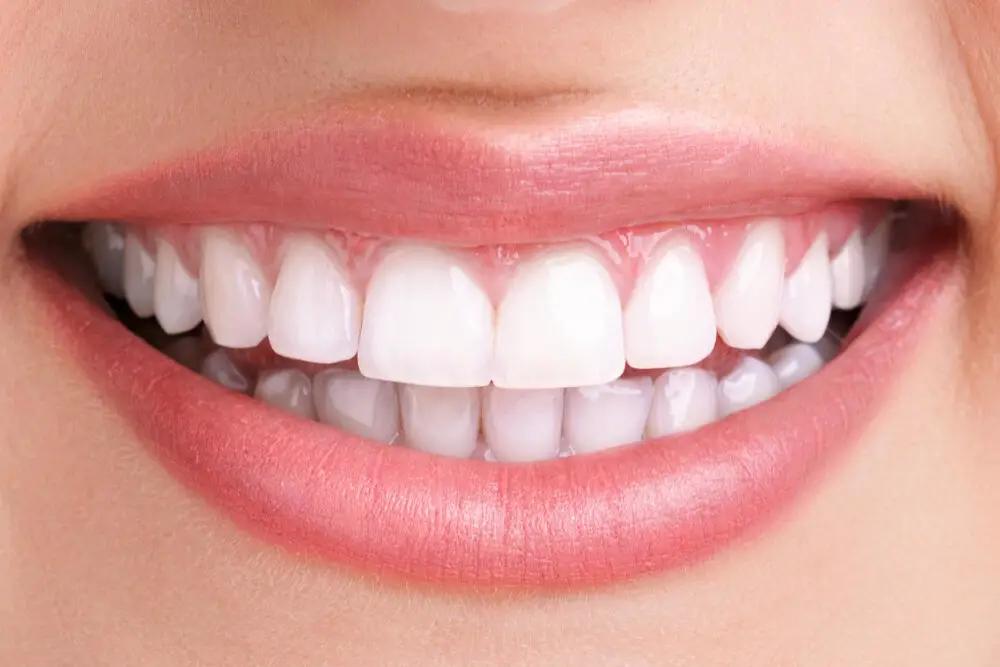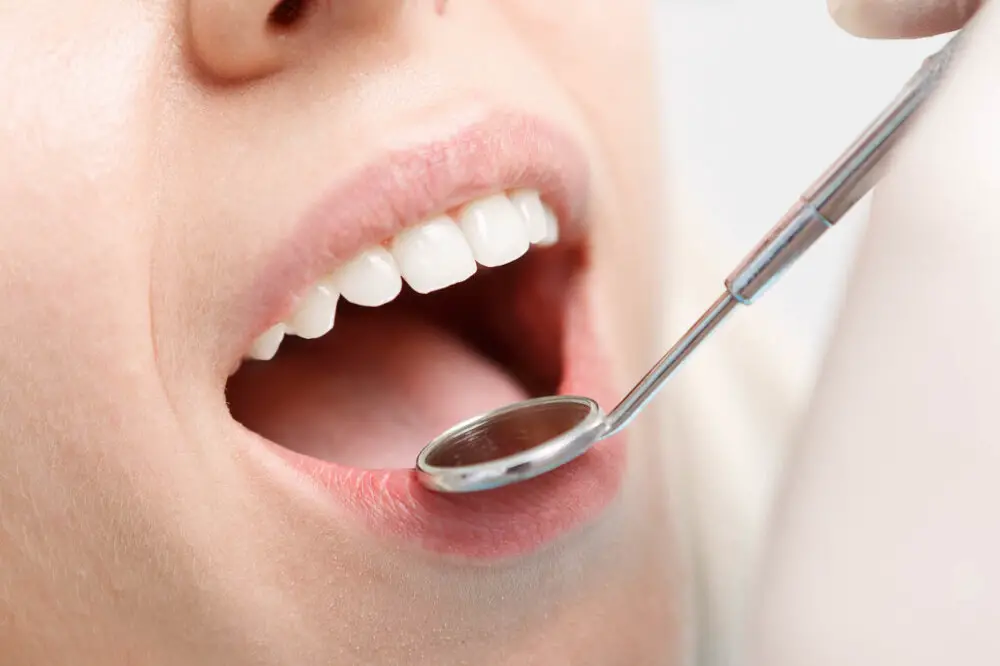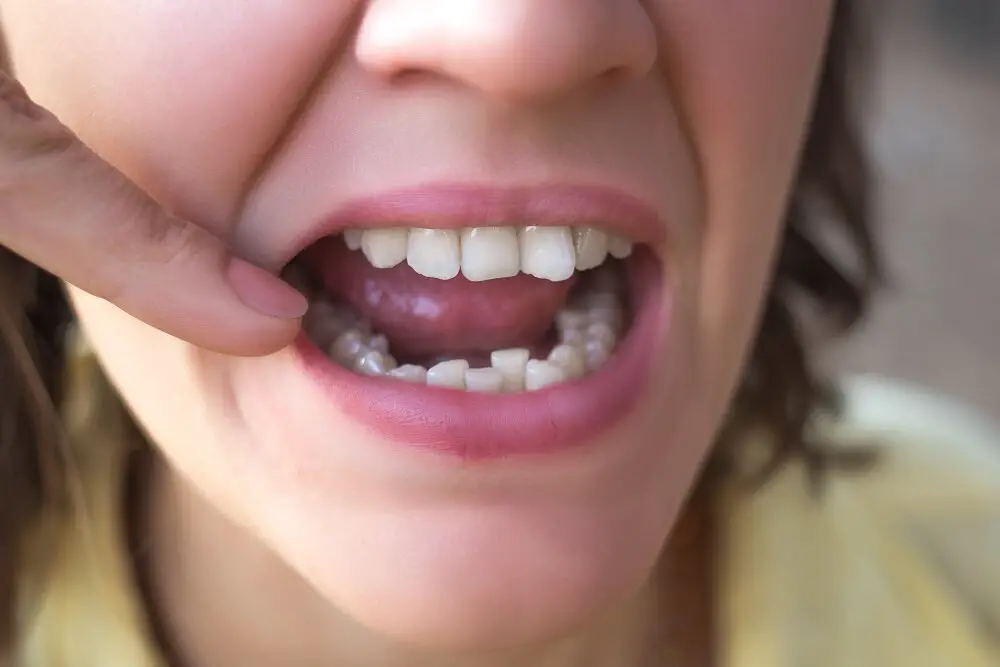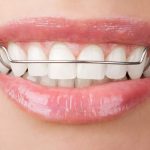How Long to Straighten Adult Teeth with Braces: A Comprehensive Guide

Crooked or misaligned teeth can be a source of embarrassment and can also cause numerous dental problems if not corrected. One of the most effective treatments for straightening teeth is braces. They work by applying gentle pressure on the teeth, gradually moving them into the desired position. However, the length of time required to straighten adult teeth with braces is a common question that many patients have. In this comprehensive guide, we’ll take a closer look at the factors that influence how long it takes to straighten adult teeth with braces and what you can expect during the treatment process. The amount of time it takes to straighten adult teeth with braces can vary greatly depending on several factors, including the severity of the misalignment, the type of braces used, and the patient’s compliance with treatment. It is important to note that every case is unique, and there is no one-size-fits-all answer to this question. However, by understanding the different factors that can impact treatment time, you can get a better idea of what to expect when undergoing orthodontic treatment with braces. Whether you’re considering braces for yourself or a loved one, this guide will provide you with the knowledge you need to make an informed decision about your dental health.
Straight teeth are not only aesthetically pleasing, but they also play a significant role in maintaining good oral health. When teeth are properly aligned, they are easier to clean, reducing the risk of plaque buildup, tooth decay, and gum disease. Additionally, straight teeth contribute to proper jaw alignment, reducing the likelihood of jaw pain, headaches, and other oral health issues. Straight teeth can also improve speech, chewing, and overall comfort in daily life. Therefore, investing in orthodontic treatment for straightening adult teeth with braces is a wise decision that can lead to both improved oral health and an enhanced self-image.
Adult orthodontic treatment is a process that involves several stages. The first stage is the initial consultation with an orthodontist to determine the best course of treatment for the patient. After this, the orthodontist will take x-rays and impressions of the teeth to create a customized treatment plan. The next stage is the placement of braces, which involves the bonding of brackets to the teeth and the threading of wires through them. The patient will then need to attend regular appointments to have the wires adjusted and tightened, gradually moving the teeth into the desired position. The length of treatment will vary depending on the severity of the case, with some patients requiring as little as six months and others needing up to two years or more. Once the teeth have been moved into the correct position, the braces will be removed and a retainer will be fitted to keep the teeth in place. Overall, adult orthodontic treatment requires patience and commitment from the patient, but the end result of a straighter, healthier smile is well worth the effort.
Factors Affecting Treatment Time

There are a variety of factors that can affect the length of time it takes to straighten adult teeth with braces. One of the most significant factors is the severity of the orthodontic issue being corrected. Patients with more complex cases, such as severe crowding or bite problems, may require longer treatment times to achieve optimal results. Additionally, the age of the patient can also impact treatment time, as younger patients typically have more malleable bones and teeth that can be more easily moved into the desired position. Another factor that can affect treatment time is the type of braces used. Traditional metal braces tend to be the most effective and efficient option for complex cases, but they may require longer treatment times compared to newer alternatives, such as clear aligners or lingual braces. Additionally, patients who are noncompliant with their treatment plan, such as failing to wear their aligners or missing appointments, may experience delays in their treatment progress. Ultimately, the length of time it takes to straighten adult teeth with braces will depend on a variety of individual factors, and it is important for patients to work closely with their orthodontist to develop a customized treatment plan that meets their unique needs.
The severity of misalignment plays a crucial role in determining the duration of the orthodontic treatment required to straighten adult teeth with braces. Minor misalignments may require a shorter duration of treatment, while severe malocclusions may require a longer duration of treatment. The extent of misalignment is determined by various factors, such as the degree of crowding, the amount of spacing, the presence of overbite or underbite, and the position of the teeth in the jawbone. The orthodontist may need to use additional appliances, such as expanders, headgear, or rubber bands, to correct the misalignment, which may also increase the treatment duration. Therefore, it is essential to get a comprehensive evaluation from an experienced orthodontist to determine the severity of misalignment and the appropriate treatment plan.
There are several types of braces available for adults, each with its own advantages and disadvantages. Traditional metal braces are the most common and affordable option, consisting of brackets and wires that are adjusted over time to gradually move teeth into their proper position. Ceramic braces are similar in design to metal braces but are made from tooth-colored materials that blend in with the teeth and are less noticeable. Lingual braces are placed on the back of the teeth, making them virtually invisible from the front, but can be more difficult to clean and adjust. Finally, clear aligners such as Invisalign are a popular option that gradually shift teeth using a series of clear plastic trays, but are generally more expensive and require more self-discipline to wear consistently. Ultimately, the type of braces used will depend on a variety of factors, including the severity of the orthodontic issues and the patient’s personal preferences and budget.
Compliance with the treatment plan is crucial in achieving the desired results when straightening adult teeth with braces. Patients must follow the instructions provided by their orthodontist, including wearing rubber bands, avoiding certain foods, and attending all scheduled appointments. Failure to comply with the treatment plan can result in longer treatment times, additional expenses, and potentially compromising the final outcome of the treatment. Patients should communicate any concerns or difficulties with their orthodontist to ensure they receive the support and guidance needed to successfully complete their treatment plan. Ultimately, compliance with the treatment plan is a partnership between the patient and their orthodontist, and both parties must work together to achieve the best possible results.
Age is a crucial factor to consider when it comes to straightening adult teeth with braces. The ideal age for orthodontic treatment is between 10 and 14 years old when the jaw is still growing, and teeth are easier to move. However, that does not mean adults cannot straighten their teeth with braces. It is possible to align teeth at any age, but the process may take longer and require more effort. Adults may experience more discomfort during treatment due to denser bone tissue and may need to wear braces for an extended period. Furthermore, the treatment plan may vary depending on the individual’s unique oral health condition, and the orthodontist may recommend alternative options such as clear aligners or lingual braces. It is essential to consult an experienced orthodontist to discuss the best treatment options and expected duration for adult teeth straightening.
The Average Treatment Time

The average treatment time for braces varies depending on several factors. Typically, the length of treatment can be anywhere from 12-36 months. One of the most significant factors that affect treatment time is the severity of the dental issue being corrected. More complicated cases that require extensive realignment of the teeth and jaw can take longer to treat. The age of the patient can also play a role, as younger patients may experience faster treatment times due to their still-developing jaws. Additionally, the type of braces being used can impact treatment time. Traditional metal braces tend to take longer to straighten teeth than newer, more advanced options like ceramic braces or Invisalign. Ultimately, the length of treatment time will depend on the unique needs and circumstances of each patient. It is important to note that proper care and maintenance of braces during treatment can also impact the length of treatment time. Patients must follow their orthodontist’s instructions carefully to avoid damaging the braces and prolonging treatment. This includes avoiding certain foods, brushing and flossing regularly, and attending all scheduled appointments. Neglecting to care for braces properly can result in complications that could lengthen treatment time and potentially damage teeth. Ultimately, the best way to ensure a successful and timely treatment is to work closely with an experienced orthodontist and follow their instructions carefully throughout the course of treatment.
Statistics on average treatment time for adult braces can vary depending on several factors, including the severity of the dental misalignment, the type of braces used, and the patient’s compliance with treatment. However, studies have shown that the average treatment time for adult braces is around 18-24 months. In some cases, treatment can take as little as six months, while more complicated cases may take up to three years. It’s important to note that shorter treatment times are often associated with more discomfort and a higher risk of tooth movement after the braces are removed. Therefore, patients should work closely with their orthodontist to create a treatment plan that balances treatment time with comfort and long-term results.
The duration of orthodontic treatment can vary widely depending on several factors. The complexity of the case is a crucial factor that determines the length of treatment. Patients with severe crowding, bite issues, or jaw discrepancies usually require longer treatment periods. The age of the patient also affects the duration of treatment. Generally, younger patients have a faster and more predictable response to orthodontic treatment, while adults may need longer treatment times. Consistency in wearing appliances, attending appointments, and maintaining good oral hygiene can also impact treatment time. Additionally, the type of treatment appliance used may affect the duration of treatment. Traditional braces, clear aligners, and self-ligating braces all have different treatment times. Ultimately, the length of orthodontic treatment can be affected by several factors, and it is best to consult an orthodontist to determine an individualized treatment plan and estimate treatment time.
Accelerated Orthodontic Treatment Options

Accelerated orthodontic treatment options have become increasingly popular among adults who want to straighten their teeth quickly without compromising the quality of the results. These treatments utilize innovative techniques and technologies that can significantly reduce the duration of the orthodontic process while achieving the same or even better results than traditional braces. One of the most commonly used accelerated orthodontic treatments is called AcceleDent, which uses a small device that applies gentle vibrations to the teeth to stimulate bone remodeling and accelerate tooth movement. This treatment can reduce the treatment time by up to 50%, making it an excellent option for busy adults who want to achieve their desired smile in less time. Another accelerated orthodontic treatment option is Propel, which uses a minimally invasive procedure to stimulate bone growth and accelerate tooth movement. This treatment involves making small perforations in the gum tissue to stimulate the bone regeneration process, which can speed up tooth movement and reduce treatment time by up to 60%. Propel can be used in conjunction with traditional braces or clear aligners and is a suitable option for adults who want to achieve faster results without compromising the health of their teeth and gums. Overall, accelerated orthodontic treatment options have revolutionized the orthodontic industry, making it possible for millions of adults around the world to achieve their dream smile in less time and with less discomfort.
Accelerated orthodontics is a modern technique that aims to reduce the amount of time required to straighten adult teeth with braces. This treatment involves the use of advanced technology such as high-frequency vibration or micro-osteoperforations to stimulate the bone around the teeth and promote faster tooth movement. The procedure is safe, minimally invasive, and can shorten the treatment duration by up to 50%. With accelerated orthodontics, patients can achieve a beautiful, straight smile in as little as 6-9 months, compared to the traditional 18-24 months. It is important to note that this technique is not suitable for everyone and patients should consult with their orthodontist to determine whether it is the right option for them.
There are various options available for accelerated treatment to straighten adult teeth with braces. One such option is AcceleDent, a device that uses gentle vibrations to speed up tooth movement. Another option is Propel, a technique that stimulates bone remodeling to accelerate tooth movement. Additionally, Wilckodontics, a surgical approach that involves softening the bone and moving teeth more quickly, may be recommended for some individuals. It is important to consult with an experienced orthodontist to determine the best accelerated treatment option for your individual needs and lifestyle.
Accelerated treatment is a promising method for patients who want to speed up the process of straightening their teeth. The biggest advantage of accelerated treatment is the reduced treatment time and the ability to achieve the desired results faster. This means that patients can enjoy a straighter, more beautiful smile in a shorter period of time, which can be very appealing for those who are concerned about the length of their treatment. However, accelerated treatment may also come with some disadvantages. The procedures used to accelerate the treatment may cause discomfort, and there may be an increased risk of root resorption or other complications. Additionally, accelerated treatment may be more expensive than traditional orthodontic treatment, which could be a concern for some patients. Ultimately, the decision to pursue accelerated treatment should be made in consultation with an orthodontist who can help evaluate the risks and benefits based on a patient’s specific needs and goals.
Maintaining Results After Treatment

After undergoing orthodontic treatment, the last thing any patient wants is to see their teeth shift back to their previous position. Therefore, it’s important to take the necessary steps to maintain the results achieved from wearing braces. The first and most essential step is to wear a retainer as prescribed by the orthodontist. Retainers help to keep your teeth in their new positions by preventing them from moving back to their original spots. Neglecting to wear your retainer can lead to a relapse, and you will have to start the treatment process all over again. Another crucial step to maintaining your results is proper oral hygiene. After the removal of braces, it’s important to continue brushing and flossing thoroughly to keep your teeth clean and healthy. Poor oral hygiene can lead to gum problems, tooth decay, and even tooth loss. Regular dental checkups are also essential in keeping your teeth in good condition. Your dentist can detect any problems early on and provide the necessary treatment to prevent any further complications. By following these simple steps, you can enjoy your new smile for years to come.
Retainers are an essential part of orthodontic treatment, and their importance cannot be overstated. They are custom-made devices that are used to maintain the position of teeth after the braces have been removed. Retainers work by holding the teeth in place while the supporting bone and gums adjust to the new position. Without retainers, there is a high chance that teeth will shift back to their original position, rendering the entire orthodontic treatment useless. Retainers come in different types, including fixed and removable retainers, and it is crucial to use them as directed by the orthodontist to ensure the long-term success of the treatment. Retainers are a small investment for a lifetime of straight teeth and a beautiful smile.
Proper care and maintenance of retainers are essential to ensure that they remain effective in keeping your teeth straight. The first step is to clean your retainers daily, preferably with a mild soap or a retainer cleaner. Avoid using hot water as it can cause the retainer to warp or lose shape. It is also important to store them in a secure case when not in use, away from extreme heat or sunlight. Avoid eating or drinking anything with your retainers on, as it can cause staining or damage. Regularly check for any signs of wear and tear and replace them as needed. By following these simple steps, you can ensure that your retainers remain in good condition and continue to support your newly straightened teeth.
After completing orthodontic treatment with braces, retainers are crucial to maintaining the results achieved. Retainers should be worn as directed by the orthodontist, typically 22 hours per day for the first few months, with gradual reduction to nighttime wear only. It is important to wear retainers consistently to prevent teeth from shifting back to their original position. Failure to wear retainers as prescribed can result in the need for additional orthodontic treatment, which can be costly and time-consuming. It is recommended to replace retainers every 6-12 months to ensure proper fit and function. Overall, wearing retainers regularly is essential for maintaining the alignment of teeth achieved through orthodontic treatment with braces.
The article \How Long to Straighten Adult Teeth with Braces: A Comprehensive Guide\ provides an in-depth analysis of the various factors that influence the duration of orthodontic treatment for adults. The author highlights the importance of seeking professional advice from an orthodontist to determine the type of braces that suit an individual’s dental needs. The duration of treatment is influenced by factors such as the extent of dental misalignment, age, oral hygiene, and overall health. The article also suggests that adult patients may require longer treatment periods, as their teeth may be less responsive to orthodontic treatment. Additionally, the article provides tips on how to accelerate the treatment process, such as avoiding sugary foods, maintaining good oral hygiene, and adhering to orthodontic appointments. In conclusion, the article emphasizes that the duration of orthodontic treatment varies depending on the individual’s case, and that patience and compliance with treatment are key to achieving the desired results.
In conclusion, the length of time it takes to straighten adult teeth with braces varies depending on the severity of the misalignment and the type of braces used. It is important to consult with an orthodontist to determine the best course of treatment for your specific needs. While traditional metal braces may take longer to achieve desired results, newer options such as clear aligners or lingual braces offer faster and more discreet alternatives. It is also important to maintain good oral hygiene and attend all scheduled appointments to ensure the best possible outcome. Ultimately, investing in a straighter smile can greatly improve not only your appearance but also your overall oral health and self-confidence.
Conclusion

In conclusion, straightening adult teeth with braces is a lengthy process that requires patience and dedication. The duration of treatment can vary depending on the severity of the misalignment, the type of braces used, and the patient’s adherence to instructions. However, with the advancements in orthodontic technology, there are now several options available that can significantly reduce the treatment time. It is essential to consult with an experienced orthodontist who can provide a comprehensive guide on the best treatment plan for your specific needs. So, if you’re considering getting braces, be prepared to commit to the process and trust the journey towards achieving a beautiful, healthy smile.






